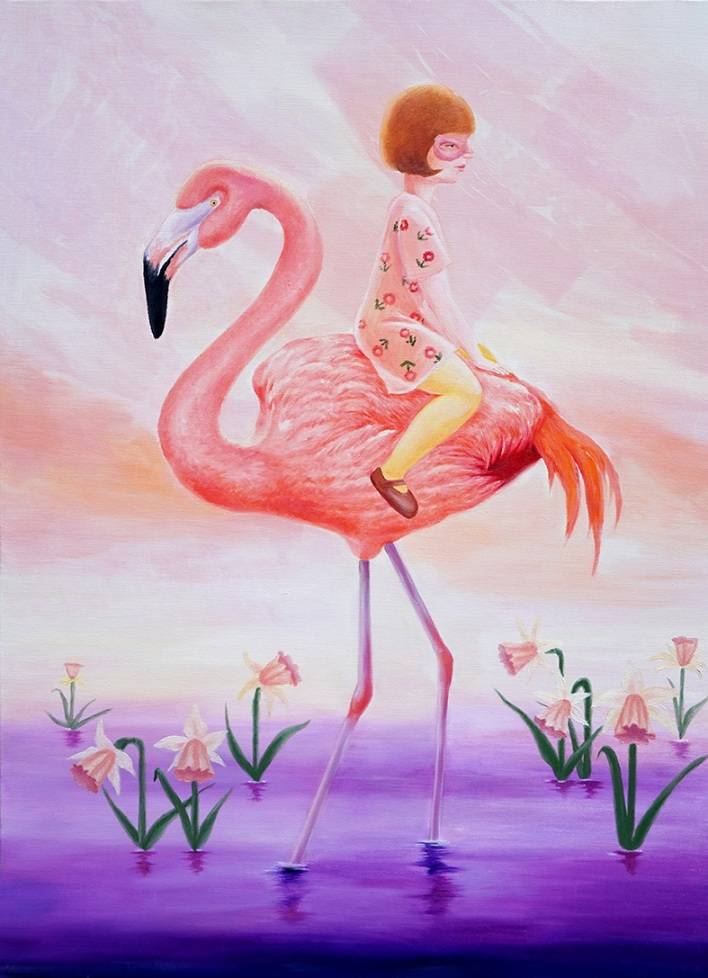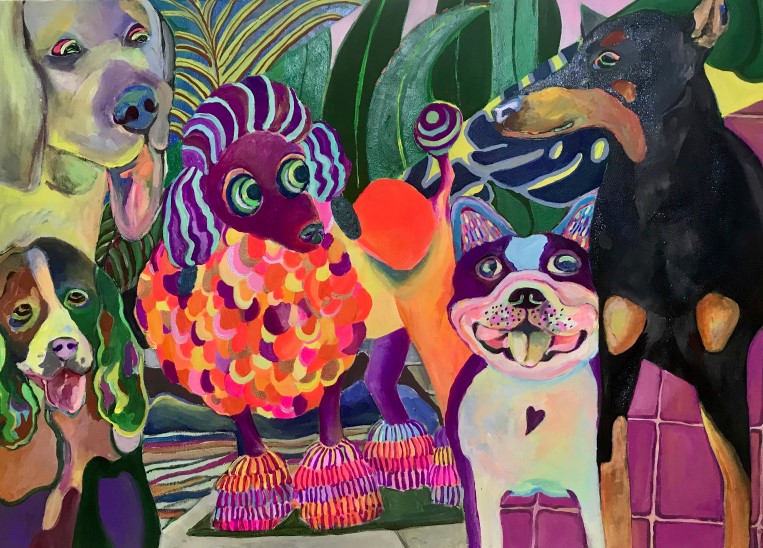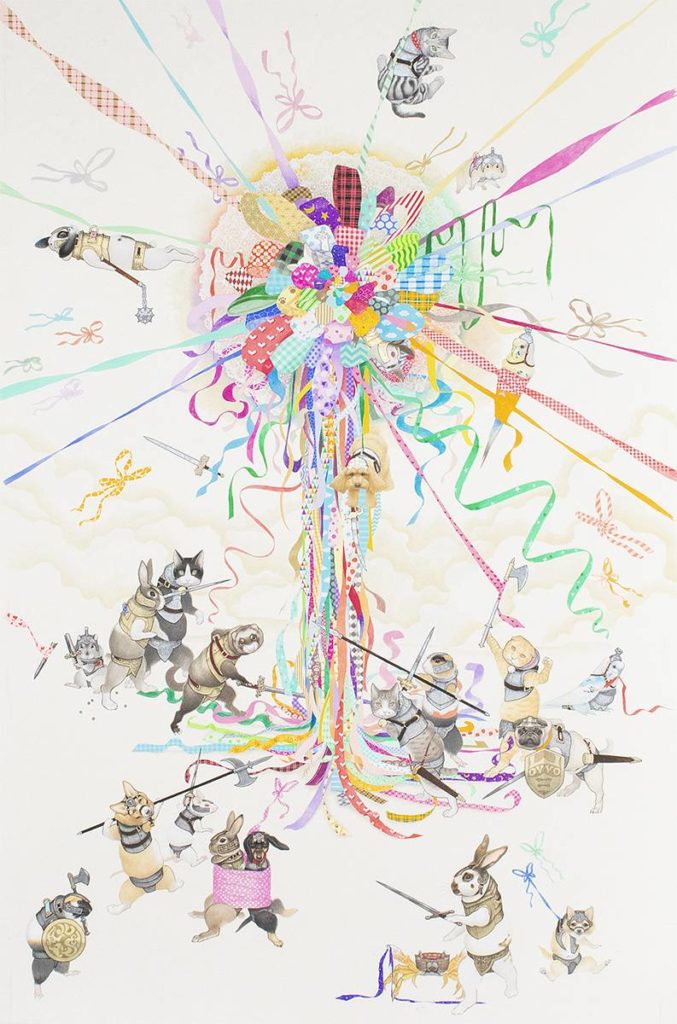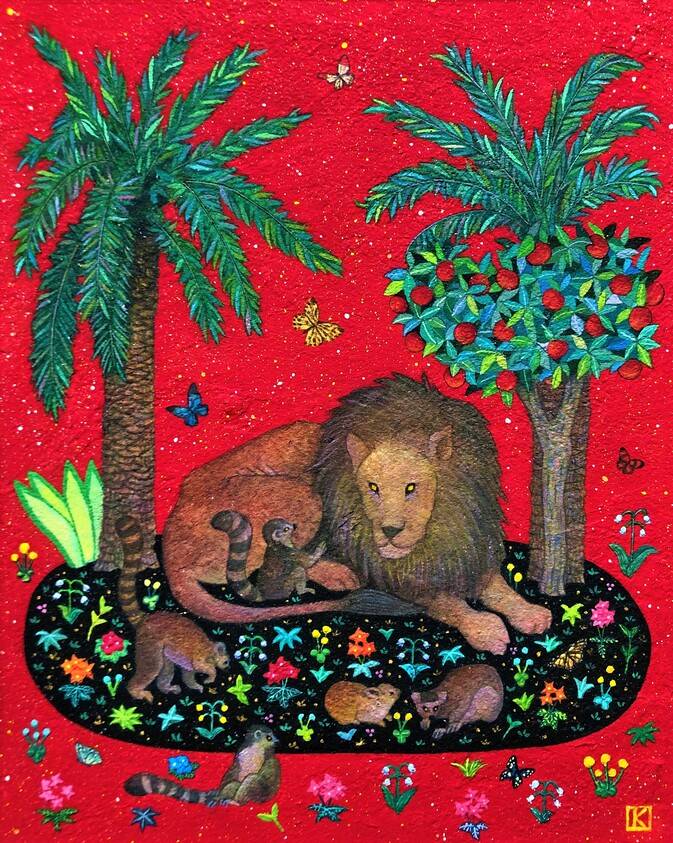Leonardo da Vinci's "Lady with a Dervish" is a 54.8 cm x 40.3 cm painting of an elegant-looking woman holding a dervish in her arms - a famous work, needless to say. Okogyo is said to be a symbol of purity, but it was also a prominent pet among the nobility in the 14th and 5th centuries.
The history of coexistence between humans and animals is long and ancient, dating back to the time of Lascaux, when people domesticated animals, sometimes as pets, sometimes as hunting partners.
The ancient Egyptians gave their animals names, and the ancient Greeks had a custom of digging a grave for a deceased dog, erecting a headstone, and inscribing a message on the grave to express their grief.

Ray_Cervus145.6cm x 103cm Click here for more information about the work
Despite this long history, it was mainly in the 17th and 8th centuries that animals began to be the subject of paintings as a trend.
Animals and plants were often illustrated as part of natural history. However, it was not until the 17th to 8th centuries that artists such as Fran Snyders and George Stubbs began to use animals as their main motifs in their paintings.
So why do we paint animals?
First of all, there is the symbolic use of animals, as in the case of da Vinci.
Although not a real animal (at least I have never seen one), the unicorn, for example, was used in 15th century painting as a motif to indicate the purity of the girl.
This view of symbolism would allow us to read a kind of story about the presence of animals in a painting. Take for example the work of SELUGI KIM, who uses the motif of a girl and an animal.

girl_440cm x 40cm Click here for the details of the work
In her paintings, the girl is not with her friends, family, school teachers, or Mickey Mouse, but with a flamingo.
The girl in the painting is not with her friends, her family, her schoolteacher, or Mickey Mouse, but with a flamingo. "In the name of culture and love, there is a lot of disguise in our society," she says.
 Girl sitting on a
Girl sitting on a
flamingo72.7cm x 53cm What about the "images" of animals?
For example, the wolf is always a villain in stories such as "Little Red Riding Hood" and "The Three Little Pigs. And when we hear the word "wolf," we are unlikely to think of a benevolent moralist. Kariya casually mentioned about the fate of wolves created by this story.
Thanks to the stories that have been spun and told by humans, wolves have become disliked. From an impartial perspective, Kariya depicted the results of a certain kind of image manipulation and the people who continue to fix such images.

Wolf50cm x 61cm Click here for the details of the work
What about the perspective of pets?
How have people portrayed their pets, their different kinds of family members? What about their stories?
The pets in Hagiwara's paintings are, in a sense, a glimpse of contemporary mores.
The dogs depicted in the work entitled "we use botanical shampoo" must have been cleansing themselves with botanical shampoo on a regular basis.
 We use botanical
We use botanical
shampoo90cm x 65cm Click here for the details of the work.
On the other hand, there are some works that are drawn from the perspective of pets. Shuntaro Kubo's paintings are one such example.
He depicts armed animals from the perspective that "the excessive love pets receive is sometimes one-sided.
Of course, we would like to believe that most of the time, pets are given the right amount of love, but when this is not the case, and even when it is no longer the case of nurturing, they cannot even make a single phone call to the local police station.
The cats and rabbits in his work rebel against humans, take up arms, and mount a resistance to gain their freedom. Kubo's paintings represent the product of imagination in that they depict a world of "what ifs," a world that is usually invisible.
-713x1024.jpg) Heavy Army (Scottish Fold
Heavy Army (Scottish Fold
)31.5cm x 24.5cm
Oxytocin170cm x 86cm
Of course, animals have their own world, and humans are not necessarily in it. The world on the screen where lions and squirrels are at ease, as depicted by Naganuma, is a world completely for animals. The animals are living in their own world with their own rules. In reality, it is not easy to see this. In reality, we don't see this very often, because everywhere is controlled by humans.
In this sense, it is somewhat sad, but also seems to have a purity that makes us long for it.
 Touch (tactile
Touch (tactile
)44.5cm x 36.5cm Click here for details
Paintings of animals, like a jungle, have their own stories to tell.
It might be a good idea to set up a different world of animals on one of the walls of your home.